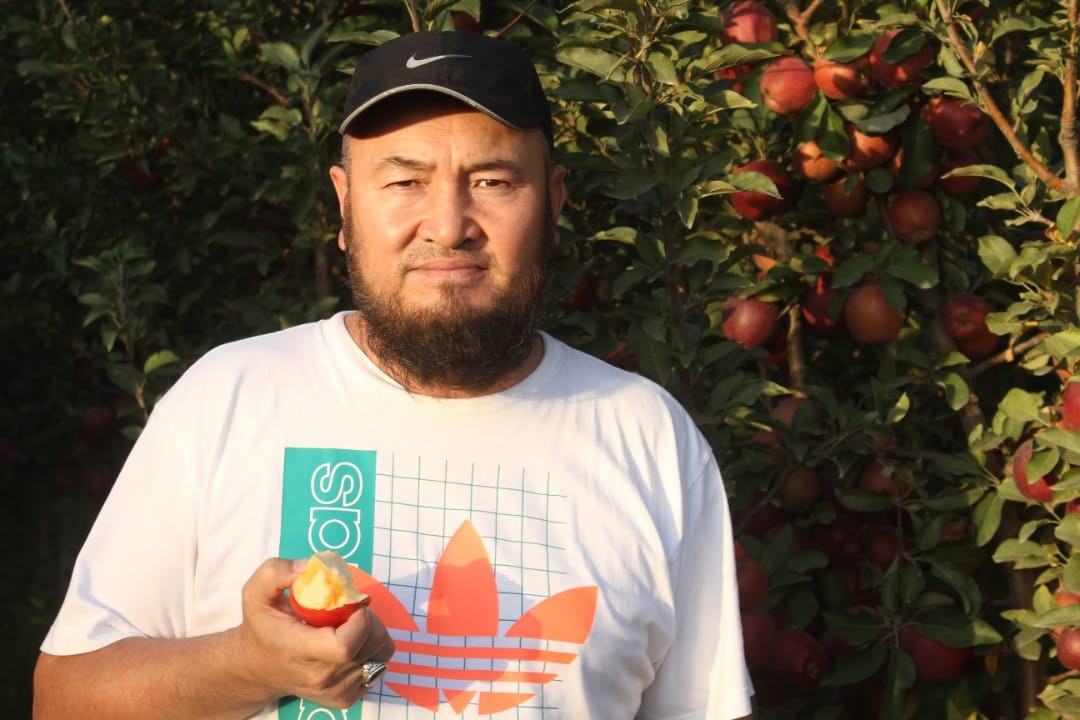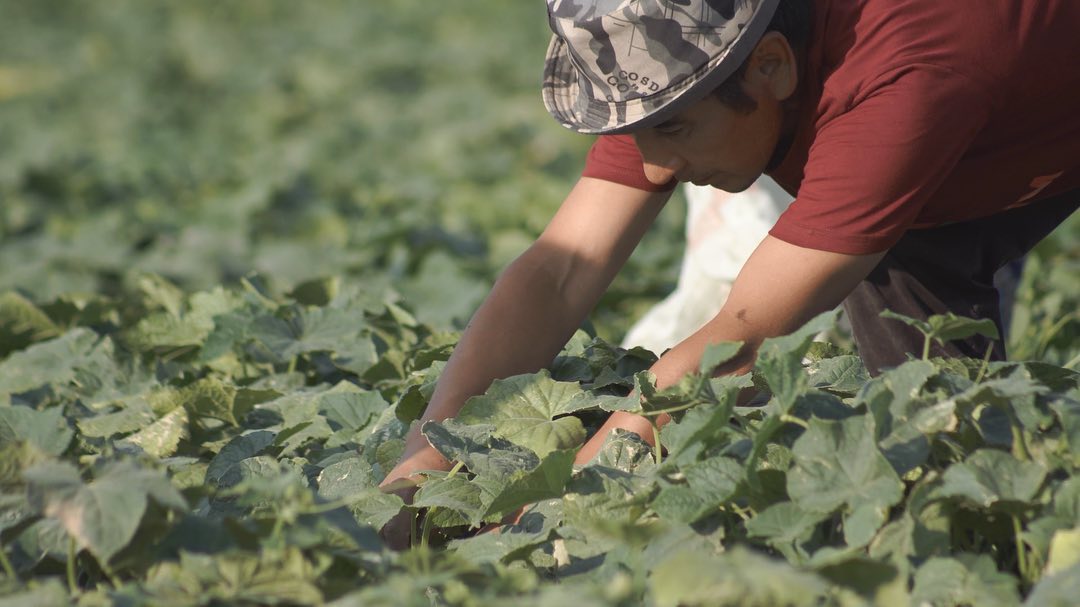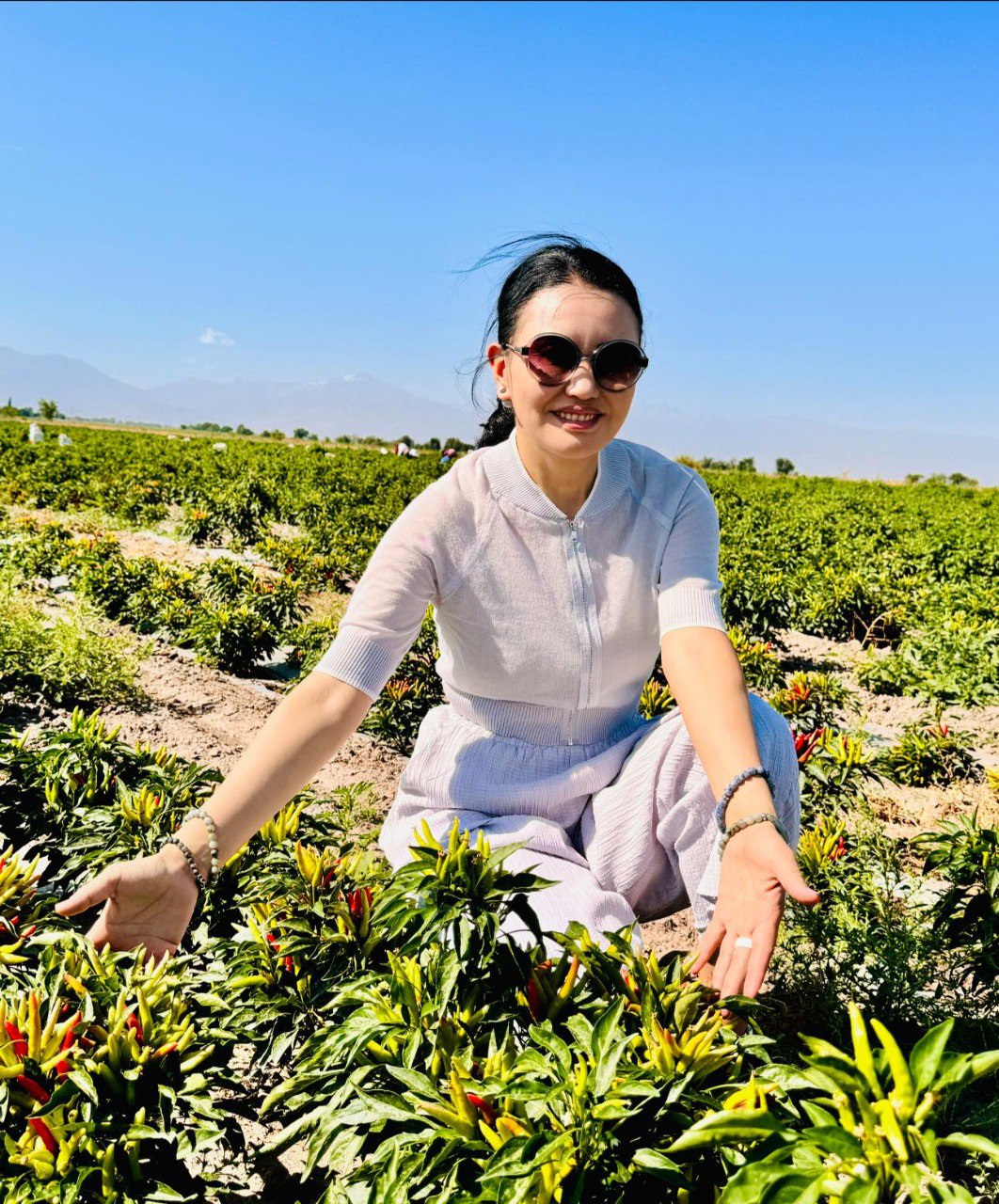Climate change poses a serious threat to food security in Kyrgyzstan, which is already in a risky agricultural zone. Without adaptation measures, annual agricultural losses are projected to exceed US$200 million by the end of this century.
In Kyrgyzstan, agriculture is not only part of the economy, but also a way of life for a significant part of the population. The country is considered agrarian, but the agricultural sector has not been able to achieve stable positive dynamics. For example, its share in the country’s GDP in 2023 was about 10%, and ten years ago this figure was at 14.7%. The reason is very complex and lies in a number of factors. Fragmentation of agricultural lands, soil degradation, deterioration of irrigation systems, difficulties with access to equipment, fertilizers and finance, a weak distribution chain – the list can go on for a long time. Against the background of all the existing problems in agriculture, climate change has also been added, the consequences of which farmers are already feeling.
Climate Change: Predictions You Can’t Ignore
According to the Concept of Agrarian Development of the Kyrgyz Republic for 2021-2025 , Kyrgyzstan is the third most vulnerable to the impact of climate change among the countries of Eastern Europe and Central Asia. The forecast calculations show that the average temperature here will increase by 2.7°C by 2050 and by 3.1°C by 2070 in all climatic zones: from 2.6°C in the Issyk-Kul region to 2.9°C in the Batken region.
According to the Asian Development Bank (ADB), precipitation trends are less clear, with increases expected in the north and decreases in the south. Rising temperatures and melting glaciers are expected to halve river flows by the end of the century. These changes will impact hydropower, household water supply, irrigation, and agricultural yields.
“Rising temperatures and evaporation will increase water consumption for irrigation, affect agro-climatic zones and lead to a reduction in irrigated land. The negative effect of climate change in Kyrgyzstan will have consequences for water management in the Central Asian region,” the ADB document says.
Economic losses in agriculture could reach $200 million

Kanatbek Kaparov , known on social media as Abdulla Tashievich, is a gardener and head of the Central Asian Gardeners Union. In recent years, he has been actively promoting the idea of planting more fruit trees that can better adapt to new climate conditions. According to him, there is already an acute shortage of irrigation water.
“There is a decline in the yield of grain, melons and vegetables. In the southern regions, many have abandoned farming due to a lack of water. The intense heat contributes to an increase in the number of pests and the development of various plant diseases. Another important point is that the grass has almost disappeared from the nearby pastures, dust rises and settles on plants and trees. This disrupts photosynthesis and the trees also die,” he says.
His words are supported by government documents. The “Kyrgyzstan Strategy for Adaptation to Climate Change until 2020 ” states that the fertility of arable land will decrease due to climate change, the area of deserts and semi-deserts will increase from 15% in 2000 to 23.3–49.7% by 2100. High-mountain pastures may be reduced by half, and spring-autumn pastures by 70%.
According to the Cabinet of Ministers’ calculations, a reduction in the yield of wheat, sugar beet and fruit crops is expected in the Chui region, wheat and barley in the Talas region and some crops in the Jalal-Abad and Issyk-Kul regions.
Agriculture is also exposed to increased exposure to climate-related extreme events, such as droughts, due to climate change. There is a risk of new species of pests and diseases of plants and animals that are not originally native to the region.
“With a shortage of water in the semi-desert regions of the country, the expected income of agricultural producers may decrease by about 15%. In the absence of timely adaptation actions, economic losses in agriculture in 2100 may reach 200 million dollars, problems will arise in ensuring food security for most products included in the basic list,” the Concept of Agrarian Development of the Kyrgyz Republic for 2021-2025 notes.

How to adapt agriculture to climate change?
Rysgul Akimzhanova is the director of the agroholding “Bay Elim”, which specializes in various aspects of the food industry. The company is not limited to production, but also actively introduces organic farming methods. According to her, they were among the first in the country to introduce a drip irrigation system.
“This year we built the largest storage pool and drip irrigate the largest area in Kyrgyzstan. We began to adapt to new climate conditions when no one thought about it. Then we began to study which crops would be good and profitable to grow given climate change. As a result, we grew gherkins, jalapenos and are already exporting them,” says the entrepreneur.

Drip irrigation is an effective measure for adapting agriculture to climate change. This method is especially relevant for Kyrgyzstan, where water losses during irrigation amount to almost 30% of the total water intake.
According to the Ministry of Agriculture , by 2023, 1,004 economic entities have installed drip irrigation, covering more than 13 thousand hectares of land.
Matraim Zhusupov , an expert in agriculture and water management, also notes other effective preventive adaptation measures. First of all, he says, it is necessary to develop the country’s meteorological service, actively implement satellite methods of agrometeorological forecasting and mapping.
“We also need to implement advanced climate-resistant technologies. These include flood control, growing drought-resistant varieties of crops, and restoring degraded lands,” the expert notes.
Growing drought-resistant varieties of crops helps farmers get a stable harvest even with a lack of moisture, maintaining food security and sustainability. Kanatbek Kaparov, head of the Union of Gardeners of Central Asia, helps farmers adapt to climate change in this direction. According to his idea, almonds and pistachios should be planted in the southern regions, since these trees do not require much water. Flour and oil can be produced from them. It is recommended to plant fodder beans under the trees – they keep the root system of the trees cool, and also provide food for both birds and livestock.
There is a lack of knowledge and resources
Kaparov continues that there are farmers who are already listening to their recommendations. Usually these are those who have the resources to develop new technologies and knowledge. However, many still grow old methods, such as wheat, barley, corn or clover, which does not allow them to make a corresponding profit. And here the main problem is the lack of knowledge, information and personnel, the gardener believes.
“Most of our people live in villages and are engaged in agriculture and livestock farming. We suffer greatly locally from a shortage of qualified specialists in agriculture. However, the country graduates thousands of lawyers and economists every year, but not agronomists. It is necessary to review the system of training the necessary specialists, and this can begin already in school years,” he says.
The fact that most farmers need knowledge about how to manage their farms in the face of new challenges is confirmed by research. 85% of respondents to the study ” Climate Change and Food Security in Batken Oblast” noted that they would very much like to receive information about the correct solution to issues related to agriculture and fruit growing in the face of climate change.
Entrepreneur Rysgul Akimzhanova considers working with people’s consciousness to be a top priority. According to her, almost all the land is in the hands of the population, so even if the state develops effective programs, without changing people’s thinking and attitudes toward agriculture, there will be no result for natural resources in the new climate conditions.
What is the government doing?
Climate change is a global problem that affects all aspects of life and requires comprehensive intervention. Kyrgyzstan, as a participant in international agreements on climate change, is trying to fulfill its obligations and adhere to the course of sustainable development.
According to Aizada Barieva , head of the climate policy department at the Ministry of Natural Resources, Ecology and Technical Supervision, the NDC was adopted, and the National Adaptation Program (NAP) is currently being developed. It is focused on the most vulnerable sectors, including agriculture and irrigation.
According to the NDC (Nationally Determined Contribution to the Paris Agreement), USD 276 million is needed for adaptation measures in Kyrgyzstan’s agriculture.
The NDC is an action plan to reduce emissions and adapt to climate change. This document outlines solutions such as reducing the number of livestock with replacement by more productive animals, developing horticulture and agroforestry, increasing the area of organic farming. It also talks about the formation of a science-based policy for climate-sustainable agricultural development and increasing climate awareness and adaptive knowledge of employees of state bodies, local governments and land users.
Kyrgyzstan prepared its NDC in 2021 and it is still unknown how far the country is progressing; government agencies have not yet been able to provide data.
As CABAR.asia was told in the Ministry of Water Resources, Agriculture and Processing Industry, many documents have been developed on the adaptation of agriculture to climate change. And they are being implemented, albeit at a slow pace – there is not enough money.
https://cabar.asia/ru/kak-kyrgyzstan-prisposablivaet-selskoe-hozyajstvo-k-novym-klimaticheskim-vyzovam



